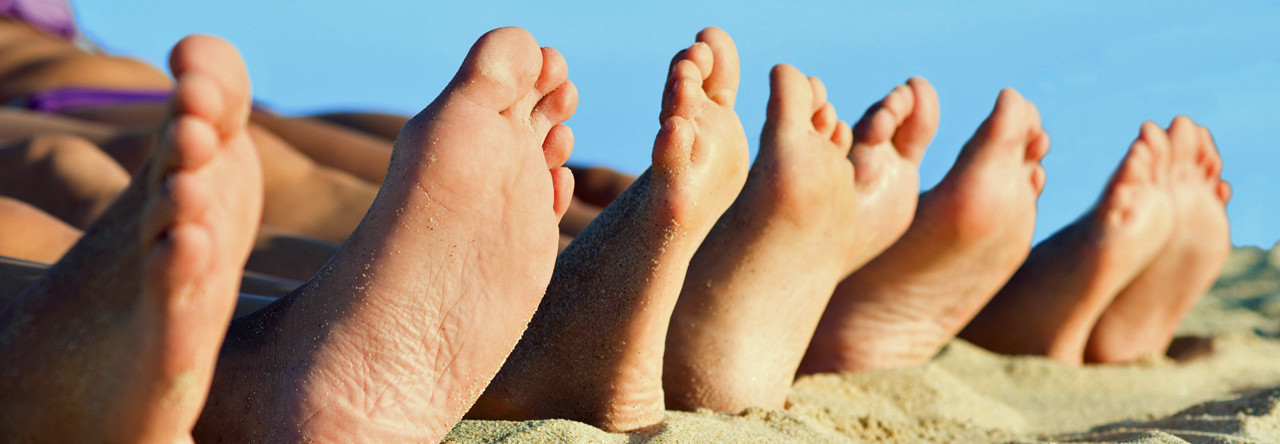Arthritis is generally characterized by the inflammation of the cartilage and lining of the body’s joints. Each foot has 33 joints which can become affected by the disease causing redness, warmth, pain and swelling. There are many causes of arthritis including heredity, bacterial and viral infections, prescription and illegal drugs, traumatic injuries, and bowel disorders such as ileitis and colitis.
The National Institute of Arthritis and Musculo-skeletal and Skin Diseases, reports about 40 million Americans suffer from arthritis and that by the year 2020, that number will go to 60 million. Both men and women over 50 are most susceptible to become affected by the disease.
Osteoarthritis
Although there are many different types of arthritis, the most common is osteoarthritis. This condition causes extreme strain and the wearing away of cartilage in the joints of the foot. Pain and swelling gets progressively worse when upright and stiffness usually occurs after rest.
Rheumatoid Arthritis
Rheumatoid arthritis is the most crippling form of the disease and effects people of all ages. There is no known cause for this condition and it is known to develop at any age. Those suffering from RA often develop severe forefoot problems such as claw toes, bunions and hammer toes. In some cases severe deformities of the joints with associated fatigue of the entire body can occur.
Gouty Arthritis
Gout is another form of arthritis caused from excess uric acid crystals collecting in and around the joints. The big toe joint is commonly the focal point due to the stress and pressure it experiences during walking and other weight bearing activities, leading to severe pain.
Traditional, non-surgical treatment, includes proper footwear, orthotics, or forefoot supports. Footwear offering high and wide space in the toe area, removable insoles for flexibility and rocker soles can reduce stress and pain at the ball-of-the-foot. Arthritic footwear should always accommodate swelling of the foot.
Category: Osteoarthritis
Hallux rigidus is a disorder of the joint located at the base of the big toe. It causes pain and stiffness in the big toe, and gets worse with time. Stiff Big Toe is actually a form of degenerative arthritis or wearing out of the cartilage. This joint is called the metatarsophalangeal, or MTP joint. It’s important because it has to bend every time you take a step. Since the most common site of arthritis in the foot, if the joint starts to stiffen, walking can become painful and difficult.
In the MTP joint, as in any joint, the ends of the bones are covered by a smooth articular cartilage. If wear-and-tear or injury damage the articular cartilage, the raw bone ends can rub together. A bone spur, or overgrowth, may develop on the top of the bone. This overgrowth can prevent the toe from bending as much as it needs to when you walk. The result is a stiff big toe, or hallux rigidus.
Because hallux rigidus is a progressive condition, the toe’s motion decreases as time goes on. In the beginning, with only minimal motion problems, the condition is called “hallux limitus.” But as the problem advances, the toe’s range of motion gradually decreases until it potentially reaches the end stage of “rigidus”— where the big toe becomes stiff, or what is sometimes called a “frozen joint.”
Hallux rigidus usually develops in adults between the ages of 30 and 60 years. No one knows why it appears in some people and not others. It may result from an injury to the toe that damages the articular cartilage or from differences in foot anatomy that increase stress on the joint.
If you find it difficult to bend your toe up and down or find that you are walking on the outside of your foot because of pain in the toe, see your doctor right away. Hallux rigidus is easier to treat when the condition is caught early. If you wait until you see a bony bump on the top of your foot, the bone spurs will have already developed and the condition will be more difficult to treat.
